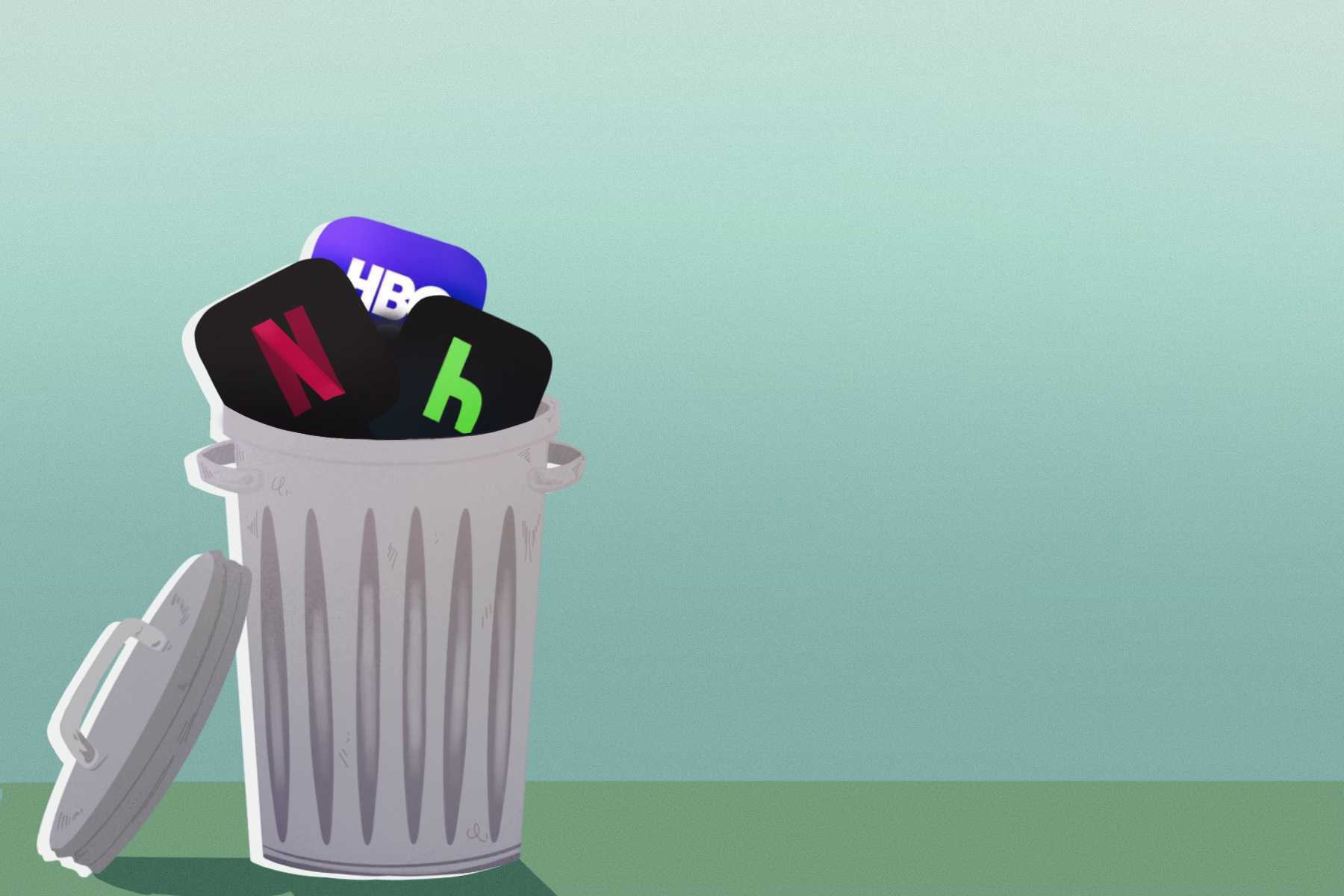During the company’s 2022 second-quarter earnings call, David Zaslav, the president and CEO of newly created Warner Bros. Discovery Inc., announced plans to merge streaming services HBO Max and Discovery+ into one entity. The merger would take effect in the summer of 2023, with Discovery+ absorbing HBO Max and distributing content on a yet-to-be-named platform under one flag named “Warner Bros. Discovery.”
The combined service would have the largest television library of any major platform with just under 3,000 TV shows, beating out Netflix’s ~1,800 for the top spot. According to data from Reelgood and IMDb, as of April 11, HBO Max offered 2,586 movies and Discovery+ offered 417, putting a combined catalog of 3,003 films in third place behind Prime Video (6,985) and Netflix (4,091). The CFO of Discovery, Gunnar Wiedenfeld, called the collaboration “a phenomenal consumer value proposition,” lining up the service to be a formidable player in the streaming service industry.
Though future pricing for the new service has yet to be announced, it is likely to stay within the current range of streaming plans. Apple TV+ currently has the lowest subscription cost, set at $4.99 a month, while Netflix’s three plans go for $9.99, $15.49 and $19.99. HBO Max currently offers two plans, $9.99/month for ad-supported streaming and $14.99 for an ad-free experience, while Discovery+ provides ad-supported and ad-free plans for $4.99 and $6.99 respectively. The addition of HBO Max’s content would add to a monthly subscription’s value, however, so it’s a safe bet to say that prices will be higher than the current plans for Discovery+. Bundling the new service with other platforms for a cheaper total price than separate add-ons would help the new service stay competitive, especially against the Disney+, Hulu and ESPN+ bundle, Hulu’s Live TV + on-demand bundle and the new Showtime/Paramount+ bundle.
The Q2 Warner Bros. Discovery earnings call follows Netflix’s recent subscriber loss, which had a ripple effect on the entire streaming services industry. Back in April, Netflix announced its first net loss of subscribers in a decade, which it attributed to a more competitive market. Despite a predicted loss of 2 million subscribers, the company only lost 970,000 — considered a win in the eyes of investors and lending to a hopeful prediction of a 1 million subscriber gain in the third quarter of 2022.
With an increasing number of streaming services cluttering the market, it makes sense that companies are tightening budgets and doing everything they can to stay competitive. One such victim of this shift in the industry was the short-lived CNN+ streaming service, which lasted just one month. After its March 29 launch, CNN+ garnered about 150,000 subscribers in its early weeks. Keeping in mind the relatively low projected 2 million subscribers by the end of the year, 150,000 in two weeks still equates to meager engagement numbers, especially compared to Disney+, which had over 10 million subscribers on launch day.
However, it wasn’t just numbers that contributed to CNN+’s downfall. CNN’s parent company, WarnerMedia, had just merged with Discovery at the beginning of April, and David Zaslav, the CEO of the newly formed company, planned to house all the company’s brands on one streaming service. This meant that WarnerMedia’s separate platforms would either need to coalesce or collapse, the former exemplified by HBO Max and Discovery+, and CNN+ succumbing to the latter.
Established in 1972, HBO was the pioneering example of a premium channel, providing an additional television service for an extra monthly fee. Without traditional advertising and sponsors, HBO could produce content that was grittier and more salacious than basic cable allowed.
Though many platforms now release similar content to keep up with cultural trends, HBO was the parent to many of the early iterations of darker, dramatic television and has several classics in its catalog. “The Sopranos” (1999-2007) influenced future shows by popularizing the anti-hero, dark plots and higher budgets for serialized storylines. “Game of Thrones,” one of the most successful fantasy series of all time, broke HBO streaming records with 17.4 million viewers tuning in for the 8th (and final) season’s premiere. The record that was broken? None other than the 16.9 million viewers that tuned in for the show’s 7th season finale.
Other shows that contributed to HBO’s success include “Sex in the City,” “The Wire,” “Westworld” and “Euphoria,” with the last one becoming the second most-watched show in HBO’s history, just behind “Game of Thrones.” Because of HBO’s penchant for giving its talent the necessary resources and space, along with its willingness to take a few risks, the brand has remained a powerhouse of quality television even as the industry landscape changes.
Since its 1985 beginning, Discovery, Inc. was mainly focused on informational and lifestyle television programming. The Discovery Channel, home of the sensation “Shark Week,” also features investigative, educational and reality shows like “MythBusters,” “Dirty Jobs” and “Deadliest Catch.” At one point, Discovery Networks U.S. owned and operated many popular channels including Food Network, Animal Planet, the Travel and Science channels, the Oprah Winfrey Network and TLC. When David Zaslav was named president and CEO of Discovery Communications in 2006, he expanded the brand into digital media and programming, eventually leading to the launch of Discovery+ in January 2021.
Despite strong content offerings, Discovery+ ended 2021 with around 22 million paid streaming subscribers, a generous audience but a pittance compared to Netflix’s 221.8 million and HBO and HBO Max’s 73.8 million. Aiming to cut subscriber losses and provide a broader catalog of content, the merger of Discovery and WarnerMedia clearly benefits the former’s numbers, as the combined number of subscribers would be over 92 million.
Though the new streaming service won’t be available until 2023, content is already changing hands. Select programming from both streaming services will appear on the other platforms even as some content is removed. Shows like “Fixer Upper” will arrive (from Discovery’s Magnolia Network) on HBO Max on Sept. 30, while some HBO original movies have already been removed from the service. It has not been announced which HBO programs will be added to Discovery+ in the interim, but CNN will get its own spot on Discovery+, which will house the CNN originals planned for CNN+ (“Stanley Tucci: Searching for Italy, “Anthony Bourdain: Parts Unknown”).
It is unclear exactly what direction Zaslav is taking Warner Bros. Discovery in, especially after the axing of the nearly finished $90 million “Batgirl” film. It was also reported that 70% of the production staff at HBO Max could be cut, “with the aim that they simply do not want more scripted HBO Max-only content,” an interesting choice seeing as the added value from HBO’s more cinematic and scripted content seems to be the biggest asset of the Discovery+ HBO Max merger. For now, audiences will just have to pick and choose which streaming services to stay subscribed to, keeping the market competitive until the new streaming service is revealed.

















